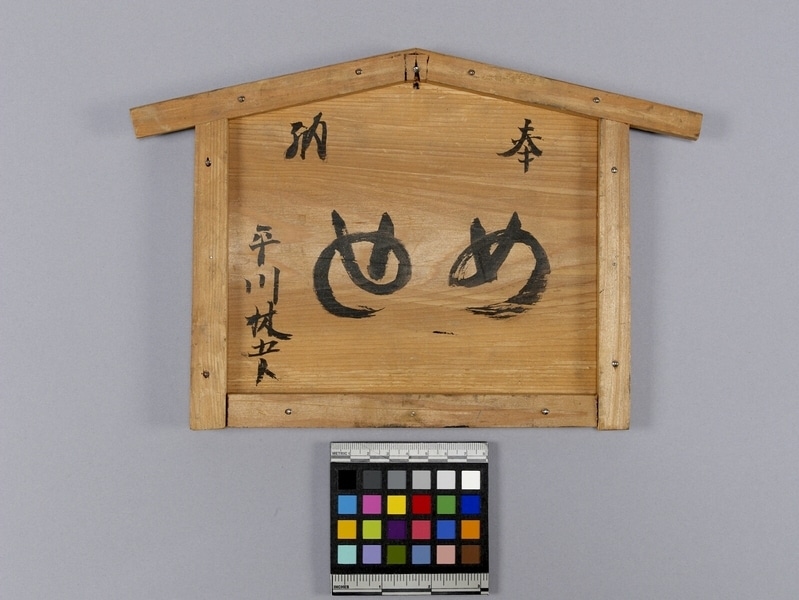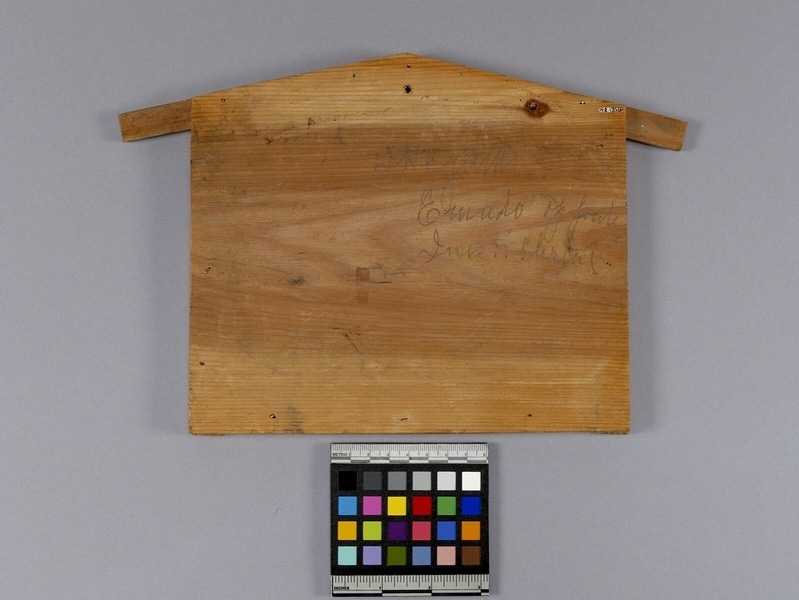Votive Plaque Item Number: N2.1356 from the MOA: University of British Columbia


Description
Painted wooden votive plaque known as ema (絵馬) with some Japanese writing in black on the face. The top reads 奉納 (hōnō; offering) and the centre reads めめ (me me; one of the character written turned sideways; me means “eye”); and on the left reads 平川林五人 or ト (Hiarakawa, and where 五 appears is an old style character for 五, which cannot be typed; likely the name of the person who wrote the above); On the back is written in pencil “Ikegami Emado” above “Inari Shrine.”
History Of Use
The history of ema (絵馬) can be traced back to the eighth century. Historically, ema were offered to a shrine, for example, to wish for a good harvest. Nowadays, they are offered to Shinto shrines or Buddhist temples as votive plaques where worshippers write down their wishes or thanks to the deities. There are two kinds of ema: koema (小絵馬) and ōema (大絵馬). Koema are the small size ema which are offered by members of the general public, either in fulfillment of a vow or as an entreaty to a deity for help in achieving an objective or rectifying some unfortunate condition. Ōema are the large ema displayed in conspicuous locations in shrines or temples and focus more on the artistic representations.
Cultural Context
religious
Iconographic Meaning
Ema (絵馬) contains two characters: e (絵) is the picture or pictorial representation; ma (馬) is horse. The horse in Shinto serves not only as a vehicle for various gods, but also as a messenger between the temporal and celestial worlds. People used the horse representation on the wooden plaque to draw or write their wishes, so that the horse carries their wishes to deities of Shinto or kami (神). Ema with characters めめ is usually offered to wish for good or healthy eyes.
Item History
- Made in Japan
- Owned by Union College before 1960
- Received from Union College (Donor) during 1960
What
- Name
- Votive Plaque
- Identification Number
- N2.1356
- Type of Item
- plaque
- Overall
- height 19.7 cm, width 29.8 cm, depth 1.3 cm
Who
- Culture
- Japanese
- Previous Owner
- Union College
- Received from
- Union College (Donor)
Where
- Holding Institution
- MOA: University of British Columbia
- Made in
- Japan
When
- Ownership Date
- before 1960
- Acquisition Date
- during 1960
Other
- Condition
- good
- Current Location
- Case 79
- Accession Number
- 1813/0007